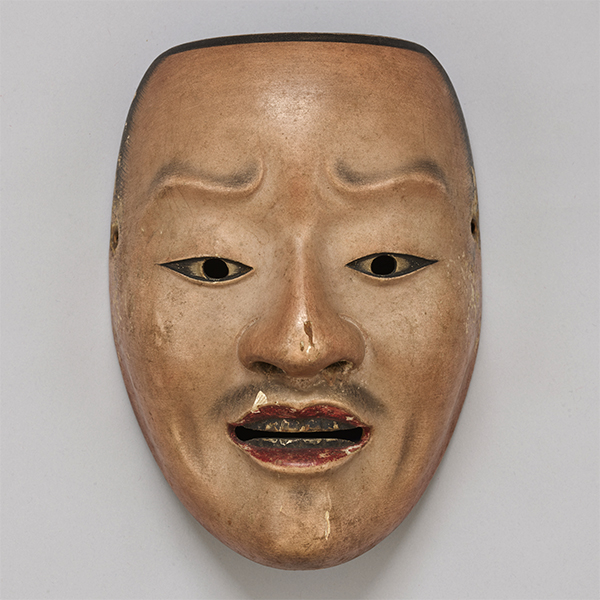Masks and Costumes Passed Down by the Konparu Troupe, Second Rotation: Edo period (1603–1868)
-

Noh Mask: Kantan Otoko, With branded mark “Tenkaichi Zekan”Passed down by the Konparu Troupe, Azuchi-Momoyama-Edo period, 16th-17th century (Important Cultural Property)
Japanese Gallery (Honkan) Room 9
October 25, 2022 (Tue) - December 25, 2022 (Sun)The Konparu troupe was one of Japan’s oldest noh theater companies and owned many ancient noh masks. During the Edo period (1603–1868), they were based in Nara, in a property granted by a powerful samurai warlord, Toyotomi Hideyoshi (1537–1598). Records suggest that, in this period, the Konparu troupe honored classical styles in their acting and costumes, with many of their masks copied from ancient examples.
The second rotation presents important noh costumes and masks that were made in the Edo period and acquired by the Konparu troupe.
| Designation | Name | Creation/ Excavation/ Provenance |
Period | Acquisition/ Ownership/ Accession Number |
CMT | ||
| Highlight | Important Cultural Property | Noh Mask, "Kantan otoko" Type | With branded mark “Tenkaichi Zekan”, Formerly owned by the Konparu troupe | Azuchi-Momoyama-Edo period, 16th-17th century | C-1539 | ||
| Highlight | Important Cultural Property | Noh Mask, "Ko’omote" type | With branded mark “Tenkaichi Kawachi”, Formerly owned by the Konparu troupe | Edo period, 17th century | C-1551 | ||
| Highlight | Important Cultural Property | Noh Mask, "Chorei beshimi" type | With branded mark “Tenkaichi Omi”, Formerly owned by the Konparu troupe | Edo period, 17th century | C-1560 | ||
| Highlight | Important Cultural Property | "Atsuita" (Noh costume), Poem design on red and gold "katamigawari" (color differing in halves) ground | Formerly owned by the Konparu troupe | Edo period, 17th century | I-3205 | ||
| Highlight | "Karaori" (Noh costume), Interconnected nested lozenges and round crest design on purple ground | Formerly owned by the Konparu troupe | Edo period, 17th century | I-3225 | |||
| Highlight | "Atsuita" (Noh costume), Basket and arabesque design on dark blue and white striped ground | Formerly owned by the Konparu clan | Edo period, 17th century | I-3208 |
